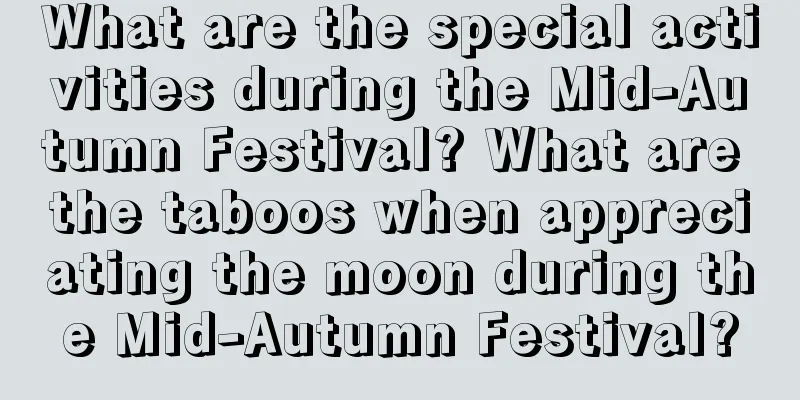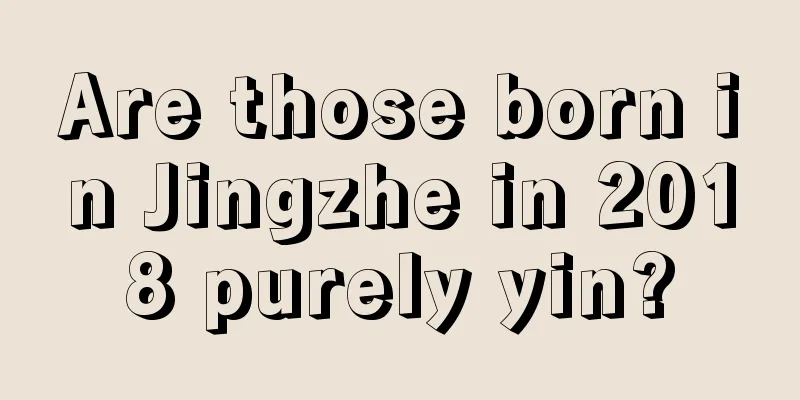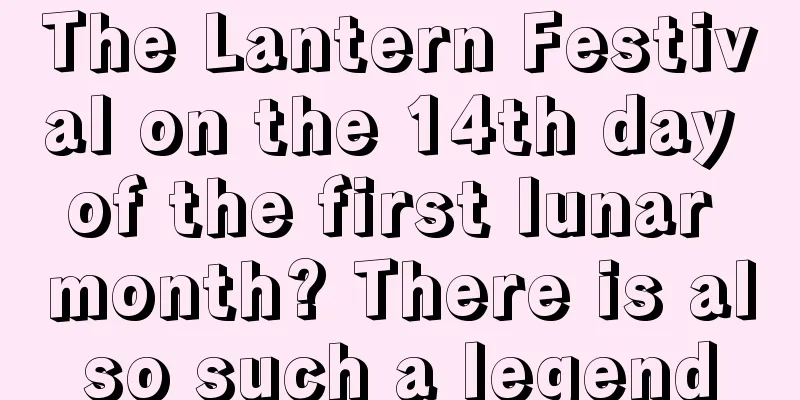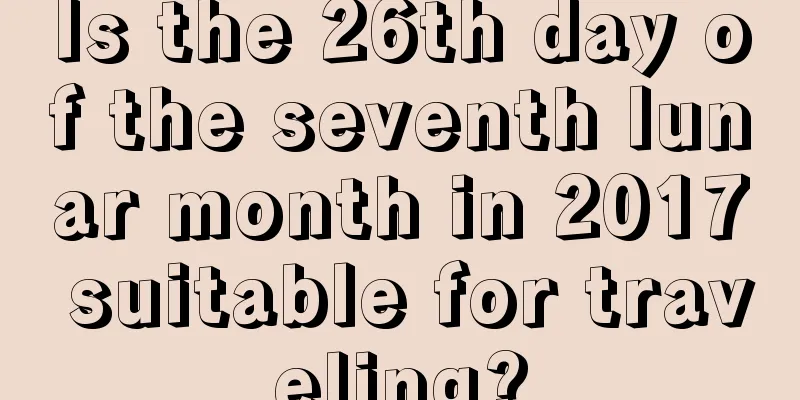What are the special activities during the Mid-Autumn Festival? What are the taboos when appreciating the moon during the Mid-Autumn Festival?

Introduction: The Mid-Autumn Festival has many special activities. So what are the special activities of the Mid-Autumn Festival? What are the taboos in moon-watching during the Mid-Autumn Festival? According to the Chinese lunar calendar, August is the second month of autumn, which was called Mid-Autumn in ancient times. Do you want to know more about the auspiciousness and inauspiciousness of the days in the eighth month of the lunar calendar in 2020? Let’s go to Mr. Shui Mo’s website to learn more.What are the special activities during the Mid-Autumn Festival?Mid-Autumn Festival Special Activities: Moon WorshipMoon worship is a very old custom in our country. It is actually an activity of worship for the "Moon God" by the ancients. In ancient times, there was a custom of "watching the moon in the evening of autumn". Xiyue means worshiping the moon god. Since ancient times, in some parts of Guangdong, people have the custom of worshiping the Moon Goddess (worshiping the Moon Lady, worshiping the moonlight) on the night of the Mid-Autumn Festival. People worship the moon and set up a large incense table, placing moon cakes, watermelons, apples, red dates, plums, grapes and other offerings on it. Under the moon, the "Moon God" tablet is placed in the direction of the moon, red candles are lit, and the whole family worships the moon in turn, praying for blessings. Offering sacrifices to the moon and appreciating the moon, as well as remembering the past with the moon, express people's good wishes. As one of the important ceremonies of the Mid-Autumn Festival, moon worship has been passed down from ancient times to the present day, and has gradually evolved into a folk activity of appreciating and praising the moon. It has also become the main form of modern people's desire for reunion and expressing their good wishes for life. Mid-Autumn Festival special event: lighting lanterns On the night of the Mid-Autumn Festival, there is a custom of lighting lanterns to help the moonlight. Nowadays, people in the Huguang area still have the custom of stacking tiles into a tower and lighting lanterns on the tower. In the Jiangnan area, there is a festival custom of making lantern boats. In modern times, the custom of lighting lanterns during the Mid-Autumn Festival has become more popular. In their article "Leisurely Talking about Seasonal Affairs", Zhou Yunjin and He Xiangfei, modern scholars, said: "The lantern-hanging is most popular in Guangdong. Ten days before the festival, each family will make lanterns with bamboo strips. They will make shapes of fruits, birds, beasts, fish, insects, and words such as 'Celebrate Mid-Autumn Festival', and then paste colored paper on them to paint various colors. On the night of Mid-Autumn Festival, candles are lit in the lanterns and tied to bamboo poles with ropes. They are erected high on the eaves or terraces. Small lanterns are also used to make words or various shapes and hung high up in the house, commonly known as 'Tree Mid-Autumn Festival' or 'Vertical Mid-Autumn Festival'. The lanterns hung by wealthy families can be several feet high, and the family members gather under the lanterns to drink and have fun. Ordinary people will erect a flagpole and two lanterns, also for their own fun. The city is full of lights, like a world of glass." The scale of the Mid-Autumn Festival lantern-lighting custom seems to be second only to the Lantern Festival. Mid-Autumn Festival Special Activities: Moon Viewing The custom of moon-watching originated from the moon-worshipping ceremony, and the solemn worship turned into a relaxing entertainment. It is said that the moon is closest to the earth on this night and appears largest, roundest and brightest, so there has been a custom of feasting and appreciating the moon since ancient times. A daughter-in-law who returns to her parents' home must return to her husband's home on this day to symbolize perfection and auspiciousness. Written records of folk activities of watching the moon during the Mid-Autumn Festival appeared in the Wei and Jin Dynasties, but it did not become a custom. By the Tang Dynasty, appreciating and playing with the moon during the Mid-Autumn Festival was quite popular, and many famous poems by poets contain verses about the moon. Mid-Autumn Festival Special Event: Chasing the Moon The so-called "chasing the moon" means that after the 15th day of the eighth lunar month, people are still excited, so on the next night, many people invite their relatives and friends to continue appreciating the moon, which is called "chasing the moon". According to the preface to Lingnan Miscellaneous Notes by Chen Zihou of the Qing Dynasty, "On the night of August 16, the enthusiasts in Guangdong gather their relatives and friends to prepare wine and food to admire the moon, which is called chasing the moon." Mid-Autumn Festival Special Event: Tide Watching In ancient times, in addition to moon-watching during the Mid-Autumn Festival, watching the tide was another major Mid-Autumn Festival event in Zhejiang. The custom of watching the tide during the Mid-Autumn Festival has a long history. As early as the Han Dynasty, there was a very detailed description of it in Mei Cheng's "Seven Hairs". After the Han Dynasty, the custom of watching the tide during the Mid-Autumn Festival became more popular. There are also records of watching the tide in Zhu Tinghuan's "Supplement to Wulin Old Stories" in the Ming Dynasty and Wu Zimu's "Dreams of the Southern Song Dynasty" in the Song Dynasty. Mid-Autumn Festival Special Event: Riddle Guessing On the full moon night of the Mid-Autumn Festival, many lanterns are hung in public places, and people gather together to guess the riddles written on the lanterns. As this is a favorite activity for most young men and women, and love stories are also told during these activities, guessing lantern riddles has also evolved into a form of love between men and women. Mid-Autumn Festival Special Event: Vertical Mid-Autumn Festival In some places in Guangdong, there is an interesting traditional custom during the Mid-Autumn Festival called "Tree Mid-Autumn Festival". "Shu" (tree) also means "vertical", which means the lanterns are erected high, so it is also called "Vertical Mid-Autumn Festival". With the help of their parents, the children make rabbit lanterns, star fruit lanterns or square lanterns out of bamboo paper, hang them horizontally on short poles, and then erect them on tall poles. When they are held high, the colorful lights shine, adding another scene to the Mid-Autumn Festival. The children often compete with each other to see who can put up the tallest, most, and most exquisite lanterns. At night, the whole city is lit up like stars, competing with the bright moon in the sky to celebrate the Mid-Autumn Festival. Mid-Autumn Festival Special Event: Playing Lu Zai "Shua Lu Zai" was a very popular children's game during the Mid-Autumn Festival in the past. A pomelo shell was used to carve a pattern with a lantern hung in the middle. Children would play in groups, or carry lanterns in the shapes of animals, melons and fruits, and walk along the street, singing "Shua Lu Zai, Shua Lu Er, light the lanterns. Those who know culture value culture, reading is the most important thing in the world, don't say that articles are useless, as the ancients said, a word is worth a thousand gold, and noble people will come from books..." After having fun, the children would disperse and go home to eat moon cakes, fruits and the like. Mid-Autumn Festival special activities: Lantern making In ancient times in Guangdong, when the Mid-Autumn Festival was approaching, children, with the help of their parents, would make rabbit lanterns, star fruit lanterns or square lanterns out of bamboo paper. In addition, many children use fruit peels to make lanterns. "In addition, there are papaya lanterns, banana lanterns, etc. The simplest one is the "grapefruit peel lantern", which can be made by children in almost every household. In addition to being used for "Mid-Autumn Festival", couples also hold lanterns and snuggle up to enjoy the moon. Mid-Autumn Festival Special Event: Lanterns There are many games and activities during the Mid-Autumn Festival, the first of which is playing with lanterns. Mid-Autumn Festival is one of the three major lantern festivals in my country, and playing with lanterns is a must during the festival. Of course, there is no large-scale lantern festival during the Mid-Autumn Festival like the Lantern Festival. Playing with lanterns is mainly done among families and children. As early as in the Northern Song Dynasty's "Wulin Jiushi", there was a record of the Mid-Autumn Festival customs, which included releasing a "little red" lantern into the river for drifting and fun. Playing with lanterns during the Mid-Autumn Festival is mostly concentrated in the south. Mid-Autumn Festival special activities: burning incense sticks In Jiangsu, people burn incense sticks on Mid-Autumn Festival night. The incense burner is covered with gauze and painted with the scenery of the Moon Palace. There are also incense burners made of incense sticks, with paper-made Kuixing (the star of heaven) and colorful flags inserted on them. There is also a custom of burning incense in Shanghai folks. Mid-Autumn Festival Special Activities: Ancestor Worship Mid-Autumn Festival customs in Chaoshan area of Guangdong. On the afternoon of the Mid-Autumn Festival, every household would set up a table in the living room for worship, place ancestral tablets, and offer various offerings. After the sacrifice, the offerings are cooked one by one and the whole family has a sumptuous dinner at the same time. Mid-Autumn Festival Special Event: Fire Dragon Dance Dancing the fire dragon is the most traditional custom of the Mid-Autumn Festival in Hong Kong. Starting from the evening of the 14th day of the eighth lunar month every year, a grand fire dragon dance event is held in the Tai Hang area of Causeway Bay for three consecutive nights. This fire dragon is more than 70 meters long, with a dragon body made of 32 sections of pearl grass and filled with longevity incense. On the night of the event, the streets and alleys of the district were bustling with winding, undulating fire dragons dancing to the light and dragon drum music. Mid-Autumn Festival Special Event: Listening to Incense Listening to incense is an ancient Mid-Autumn Festival custom that has been popular in Taiwan. In ancient times, young girls who wanted to find a good partner would first burn incense and worship before the gods at home, tell their worries, and pray to the gods to point them in the direction of the incense. Then, they would follow the direction indicated and remember the first words they heard accidentally or overheard on the road. When they got home, they would throw the dice to judge whether the divination was good or bad. For example, when divining about life events, if you hear things like eating sweet cakes, blooming flowers, or a full moon, it means a good omen and happiness is approaching. Mid-Autumn Festival Special Event: Lighting Pagoda Lanterns Mid-Autumn Festival Lanterns are quite different from Lantern Festival Lanterns. Pagoda lanterns are lit on Mid-Autumn Night and are mainly popular in the south. Pagoda lanterns are lanterns made in the shape of a pagoda by village children using rubble they pick up. In the Qing Dynasty, villagers in Suzhou used tiles to build a seven-story pagoda in the wilderness, enshrined Ksitigarbha in the middle and lit lamps around it, which were called "pagoda lamps." Children in Guangzhou light "Fan Tower Lanterns" made of broken tiles; there are also pomelo peel lanterns, which are made of red pomelo peels with various figures and flowers carved into them, with a colored glaze lamp placed in the middle, emitting red light. In addition, the game of burning tile lamps (also known as burning flower towers, burning tile towers, and burning foreign towers) is widely spread in the south, and is popular in Jiangxi, Guangdong, Guangxi and other places. As recorded in Volume 5 of the Records of the Customs of China, in Jiangxi Province, "On the night of the Mid-Autumn Festival, children usually pick up tiles outside and pile them into a round tower with many holes. At dusk, they put the tower in the firewood under the bright moon and burn it. When the tiles are red hot, they pour kerosene on them to add fuel to the fire. In an instant, the whole area is red and as bright as day. They don't douse the fire until late at night when no one is watching. This is called burning tile lamps." What are the taboos when appreciating the moon during the Mid-Autumn Festival?1. If you have been in poor health recently, it is recommended that you do not watch or worship the moon outdoors.2. If you have had a miscarriage or given birth to a baby recently, it is not suitable for you to watch the moon, even from the balcony at home. 3. If you have just moved recently and did not have any housewarming party after moving, or if you feel that your health or fortune has been bad after moving, please be cautious when appreciating the moon. 4. No matter what the reason, male friends of a couple who have just broken up are not allowed to watch the moon, and are not allowed to act outdoors under the full moon. 5. Regardless of whether you are a man or a woman, you must be careful about doing sexual things in front of a full moon. Especially when you are outdoors or in the wild, you must be extra careful. 6. If you have been frustrated recently, such as having bad luck in officialdom, business losses, or having bad luck one after another, please be sure not to appreciate the moon. In addition, it is best not to appreciate the moon alone. When worshiping the moon, the more people there are, the better. The moon is the ancestor of the Yin meridian, and the full moon is actually the time when Yin is at its peak. How can one find the destined one in such a vast sea of people? When will the marriage begin? Welcome to click on the "Premium Calculation" below to make predictions in advance. I wish you find your destined person soon! |
Recommend
Is the day before Xiaohan in 2020 an auspicious day for engagement? Analysis of agricultural proverbs about Xiaohan solar term!
Introduction: You also need to choose an auspiciou...
Is it a good idea to open a new store or company on September 12, 2017 in the lunar calendar?
There are good and bad days, life has its bittern...
Is it okay to pick up the car on November 23rd of the lunar calendar, 2017?
Winter months are cold, but when everything goes ...
What day is the 20th of the leap sixth lunar month in 2017? What month and date is it?
The arrival of the leap month of June in the luna...
What do you need to prepare for the Dragon Boat Festival? Is the 2019 Dragon Boat Festival an auspicious day?
The fifth day of the fifth month of the lunar cale...
What are the do's and don'ts on April 14 (5.6) 2020?
As the days go by, how can we know whether they a...
What is the date of the second day of the tenth lunar month in 2020? How to calculate the auspicious days
The lunar calendar is the traditional Chinese cal...
What are the taboos on the 13th day of the sixth lunar month in 2019?
Want to know more about the dates and auspicious ...
Is the 30th day of the twelfth lunar month in 2018 a suitable day for praying? What day is New Year's Eve?
Introduction: Every day unfolds differently, and t...
Is the fate of a girl born on the eighth day of the first lunar month in 2019 good or bad?
The eighth day of the first lunar month is the Shu...
Is May 24th, the Lunar Year of the Tiger 2022, a good day for a haircut?
Is May 24th, the Lunar Year of the Tiger 2022, a g...
What is the fate of a baby boy born on the seventh day of the twelfth lunar month in the Year of the Rat 2020?
What is the fate of a baby boy born on the seventh...
Auspicious day for groundbreaking: Is it appropriate to break ground on Christmas Eve on the tenth day of the winter lunar month in 2020?
Introduction: It is also necessary to choose an au...
Where is the direction of the God of Happiness on November 22, 2019? Explanation of the direction!
There are formulas for finding the God of Happine...
Is September 16th of the lunar calendar in the Year of the Rat 2020 a suitable day to pray?
Is September 16th of the lunar calendar in the Yea...









